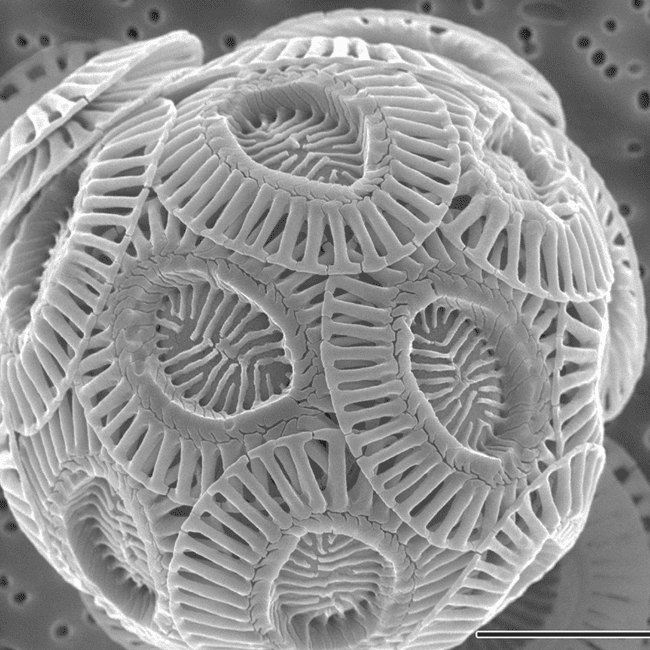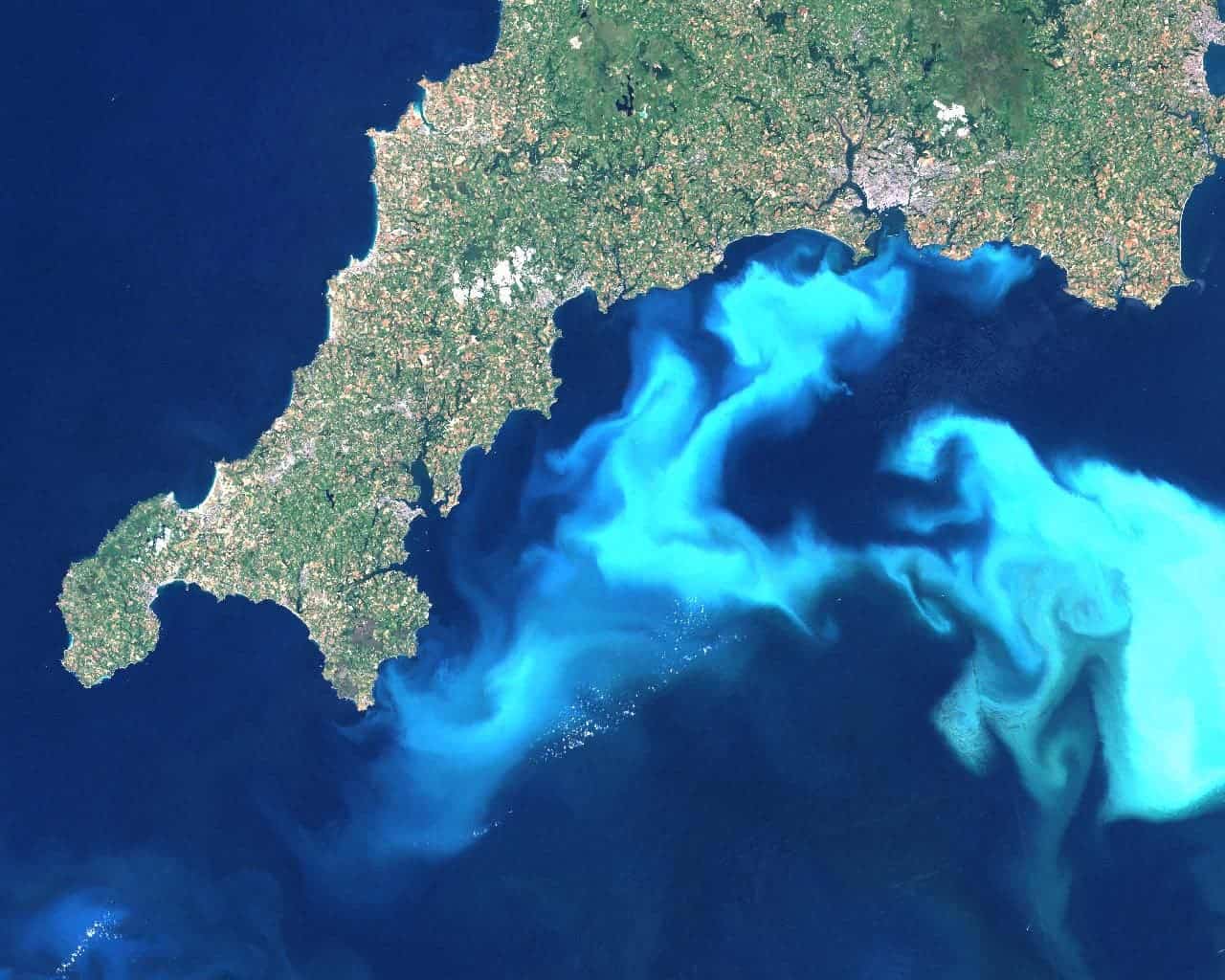Most phytoplankton aren’t visible to the naked eye. However, one species of phytoplankton, Emiliania huxleyi, is so abundant that its blooms can be seen from space. Now, scientists from the Weizmann Institute of Science in Israel have found that this phytoplankton could be indirectly responsible for reflecting sunlight and creating clouds.
When Emiliana huxleyi blooms, it is often infected by the virus EhV, which breaks up the bloom. The phytoplankton is composed of tiny, intricate plates of calcium carbonate. When infected, parts of these chalky shells are released into the air when bubbles in the ocean burst. These particles are not the only ones released from the ocean: a number of others are also released in the same way. They act as aerosols in the atmosphere which can start cloud formation and reflect solar energy.
“This study demonstrates that oceanic microbial interactions affect key atmospheric processes. It also suggests that coccoliths may by key contributors to coarse mode sea spray aerosol, and may participate in important chemical reactions in the marine atmosphere, and in cloud formation processes,” commented commented Dr. Miri Trainic from the Weizmann Institute of Science to ZME Science.

The structure of E. huxleyi. The little plates fall off and can become airborne when the phytoplankton is infected by a virus. Image credits: Alison R. Taylor (University of North Carolina Wilmington Microscopy Facility).
Although it was known that E. huxleyi’s particles could act as aerosols, they have a much greater impact than expected. The researchers observed a model system in the laboratory and found the phytoplankton produced particles four times larger than expected and were very abundant. These characteristics, along with the particle density, indicate that they could be more influential in affecting atmospheric conditions than originally thought.
“What we found was that we don’t need to look at just the size of the [particle], but also its density,” says Assaf Vardi, an environmental scientist at the Weizmann Institute of Science. “These ones are shaped like parachutes; they have an intricate structure of calcium carbonate with lots of space within it, which extends the particle’s lifetime in the atmosphere.”
The next step for the scientists is to study this phytoplankton and its particles in the atmosphere to understand the relationship of these particles with the natural world. The world is such an interesting and complex place: even a single-celled organism can influence the climate.
Journal reference: Trainic, et al.: “Infection dynamics of a bloom-forming alga and its virus determine airborne coccolith emission from seawater”, iScience










